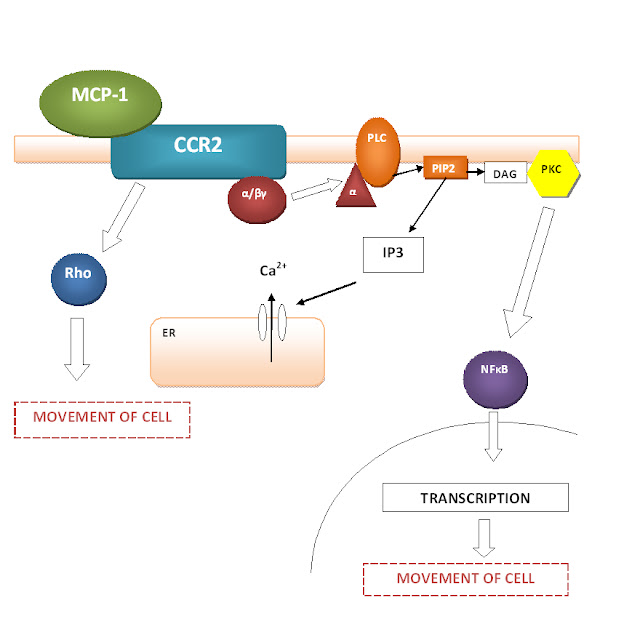(1) Zhao, Q. 2010. Dual Targeting of CCR2 and CCR5: Therapeutic Potential for Immunologic and Cardiovascular Diseases. Journal of Leukocyte Biology 88(1): 41-55
(2) Struthers, M. and Pasternak, A. 2010. Common challenges to the development of CCR2 agents have included poor activity at the rodent receptor and selectivity for both other chemokine receptors and ion channels. Current Topics in Medicinal Chemistry 10(13): 1278-98
(3) Proudfoot, A. 2008. Is CCR2 the Right Chemokine Receptor to Target in Rheumatoid Arthritis? Arthritis and Rheumatism 58(7): 1889-1891
(4) Kang, Y. et al. 2010. CCR2 antagonism improves insulin resistance, lipid metabolism, and diabetic nephropathy in type 2 diabetic mice. Kidney International 78(9): 883-94
(5) Murphy P. 2008. Janeway’s Immunobiology. New York. Garland Science
(6) Martinez, H. et al. 2011. Critical Role of Chemokine (C-C Motif) Receptor 2 (CCR2) in the KKAy + Apoe -/- Mouse Model of the Metabolic Syndrome. Diabetologia
(7) Brodmerkel, C. 2005. Discovery and Pharmacological Characterisation of a Novel Rodent-Active CCR2 Antagonist, INCB3344. The Journal of Immunology 175: 5370-5378
(8) Chuang, S. et al. 2011. Cilostazol Redusces MCP-1-induced Chemotaxis and Adhesion of THP-1 Monocytes. Biochemical and Biophysical Research Communications 411: 402-408.
(9) Gilbert, J. et al. 2011. Effect of CC Chemokine Receptor 2 CCR2 Blockade on Serum C-Reactive Protein in Individuals at Atherosclerotic Risk and With a Single Nucleotide Polymorphism of theMonocyte Chemoattractant Protein-1 Promoter Region. The American Journal of Cardiology 107(6): 906-911
(10) Cullen, J. et al. 2007. Resveratrol inhibits expression and binding activity of the monocyte chemotactic protein-1 receptor, CCR2, on THP-1 monocytes. Atherosclerosis 195: 125-133
(11) Cherney, R. et al. 2009. Discovery of trisubstituted cyclohexanes as potent CC chemokine receptor 2 (CCR2) antagonists. Bioorganic and Medicinal Chemistry Letters 19:597-601
(12) Lommen, G. et al. 2005. 2-Mercaptoimidazoles, a new class of potent CCR2 antagonists. Bioorganic and Medicinal Chemistry Letters 15:497-500.
(14) Matsushima, K. et al. 2011. Chemokines in inflammatory and immune diseases. Inflammation and Regeneration 31(1): 11-21
(15) Gerszten, R. et al. 1999. MCP-1 and IL-8 trigger firm adhesion of monocytes to vascular endothelium under flow conditions. Nature 396: 718-723
(16) Zernecke, A. et al. 2008. Chemokines in Atherosclerosis: An Update. Atherosclerosis, Thrombosis and Vascular Biology 28: 1897-1908
(17) Melgarejo, E. et al. 2009. Monocyte Chemoattractant Protein-1: A Key Mediator in Inflammatory Processes. The International Journal of Biochemistry and Cell Biology 41: 996-1001













